AMD’s New EPYC 7F52 Reviewed: The F is for ᴴᴵᴳᴴ Frequency
by Dr. Ian Cutress on April 14, 2020 9:45 AM EST- Posted in
- CPUs
- AMD
- Enterprise
- Enterprise CPUs
- EPYC
- SP3r2
- CPU Frequency
- Rome
- 7Fx2
CPU Performance: Rendering and Synthetics
For the rest of our CPU tests, we’re using a mix of rendering and synthetic workloads. This is slightly different to our previous server reviews, due to some adjustments, and we hope to be running something similar to our standard server workloads in the near future.
All CPUs are run with SMT/HT enabled.
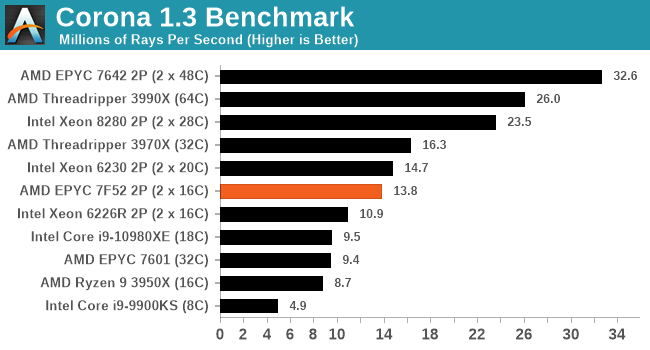
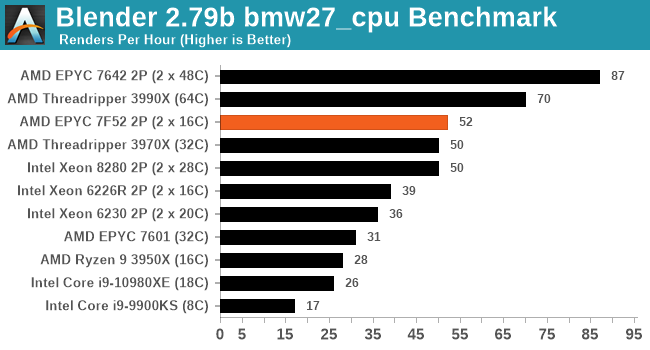
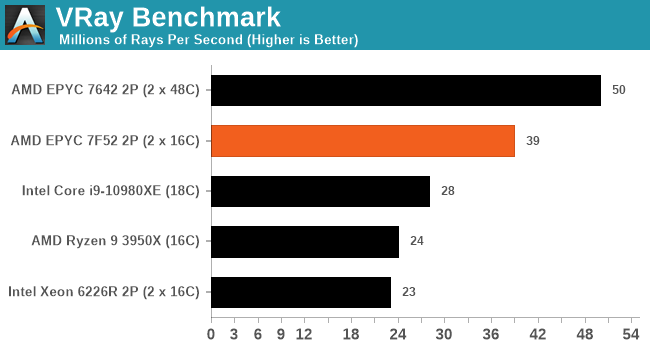
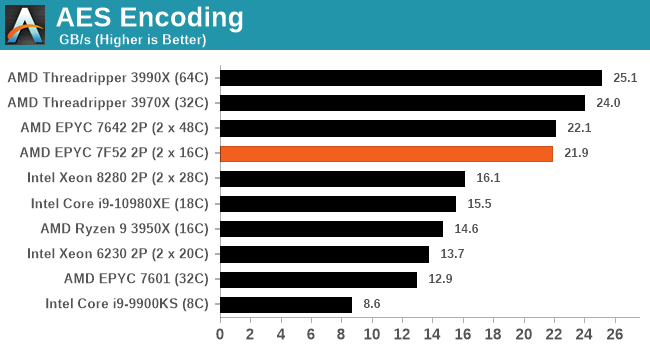
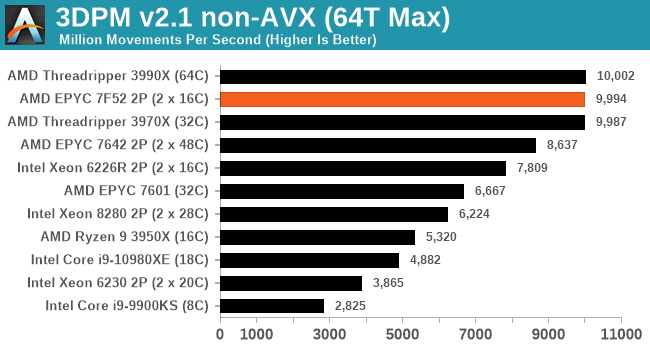
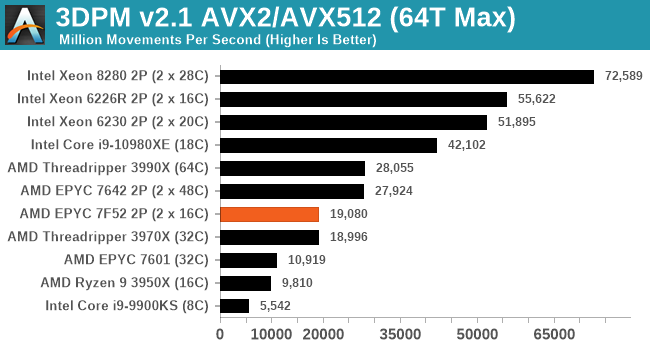
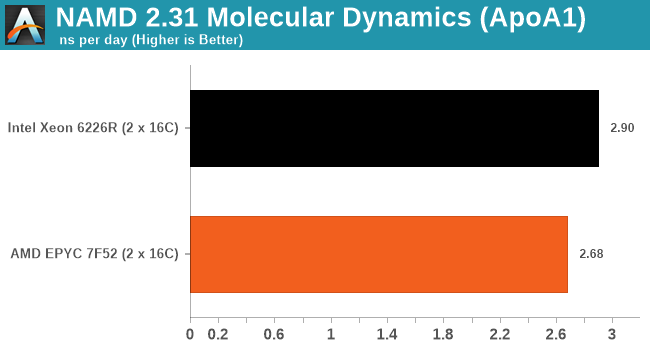

Even with the addition of a socket-to-socket in the mix, the dual 7F52 setup scores up to +100% in some benchmarks over the previous generation EPYC 7601. Against Intel’s latest 16-core Cascade Lake Refresh hardware, the AMD takes a sizeable lead in most benchmarks (except notably AVX512), which is perhaps to be expected given the price difference and power difference. What is interesting is how in certain workloads, the 2P 7F52 setup can make a reach up for the Xeon 8280s, despite the 8280s being 3x the cost each.










97 Comments
View All Comments
Ian Cutress - Tuesday, April 14, 2020 - link
Aha, that's good to know. I'll essentially call it a $375 RRP above the 7742 then.realbabilu - Tuesday, April 14, 2020 - link
I wish anandtech has performance / price ratio index for respectable synthetic test. For this behemoth price, I think render basis or database process basis synthetic for per/price ratio will be nice.Ian Cutress - Tuesday, April 14, 2020 - link
I'm looking into it for our next review.casperes1996 - Tuesday, April 14, 2020 - link
When I read the title and the way "High" was lifted... I immediately thought this would be Ian Cutress' writing. Just felt like his form of lovely joking about.MenhirMike - Tuesday, April 14, 2020 - link
I'm not sure I get the difference between 7F and 7H - of course, the 7H has more cores, but isn't it the same principle of "More Frequency than regular parts"?In any case, and unrelated, the EPYC 7282 is a thing of beauty at 120W TDP.
DanNeely - Tuesday, April 14, 2020 - link
7H gets it just by being significantly higher power than a standard chip; it's essentially a factory overclock with a warranty. It's target is applications that are both wide (benefit from lots of cores) and tall (benefit from fast single threads). The F series parts are focussed much more exclusively on tall workloads; and compared to mainstream low core count Epyc's have higher clock rates due to the increased TDP but also huge amounts of L3 cache/core because they're made by turning off most of the cores in each chiplet instead of only using a few mostly/entirely enabled chiplets.eek2121 - Tuesday, April 14, 2020 - link
AMD: “So much winning from binning!”AshlayW - Tuesday, April 14, 2020 - link
Clear indication that Zen2 has higher IPC / is a superior core (and I wouldn't expect any less...) than the 5-year old Skylake. AMD has the single-threaded lead now, too. How times have changed.ksec - Tuesday, April 14, 2020 - link
These sort of pricing just shows AMD is working on profit margin rather than volume. I am a little worry AMD is still not gaining enough market shares in the Server Market. As things stands now they are still sub 10% Server CPU shipment, on a capacity constrained Intel and better Pref / dollar product line.pepoluan - Tuesday, April 14, 2020 - link
It takes time for Enterprise market to switch over. They have to validate, re-validate, and validate some more to ensure that their bread-and-butter applications run without any hiccups. They would rather limp along on much less efficient systems that work properly, than running efficient systems that has stability problems. (Not saying that AMD Rome has stability problems, it's just that Enterprises want *proof* of stability, that's why they validate extensively.)Plus they like to use their systems until its economic lifetime passes (about 3-5 years).
Nearing the end of 2020, we might see a sudden, major uptick in AMD server market share.